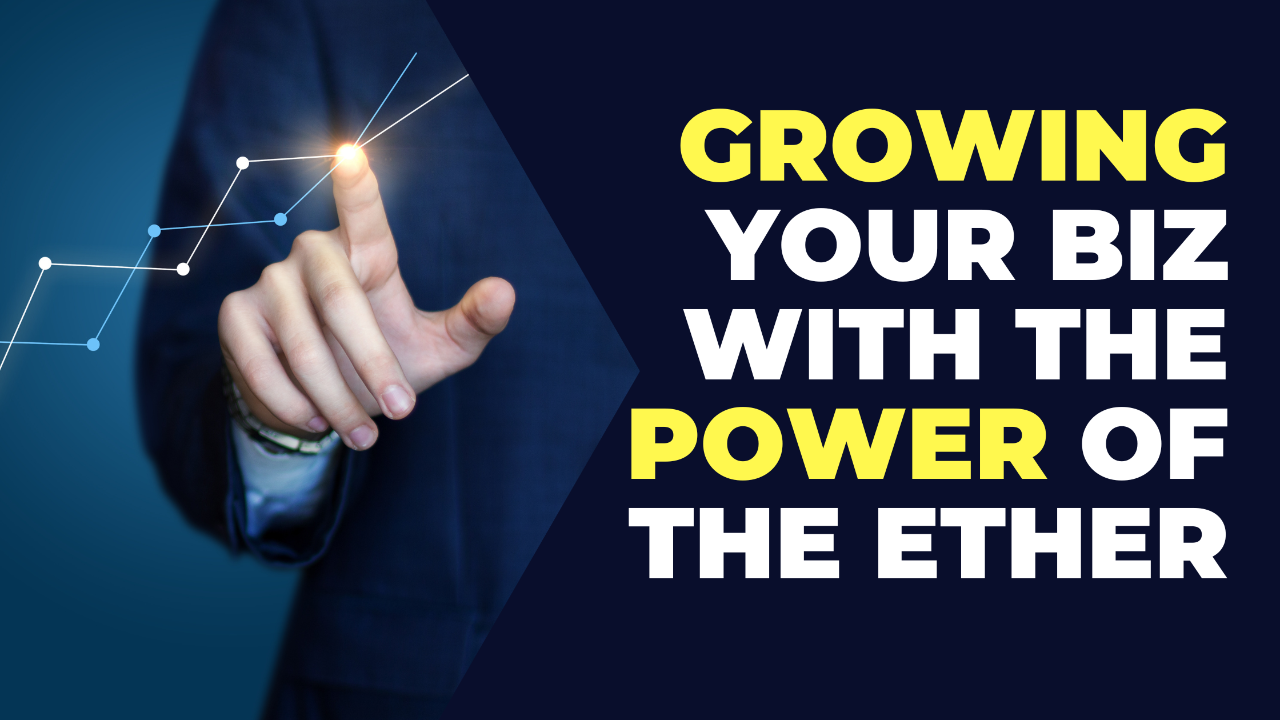Selling in the Ether: Growing Your Business

Whether you own an e-commerce site, a brick-and-mortar store, or thinking of buying either one…this post is for you!
E-commerce is a booming industry with no signs of slowing down. According to Statista, sales in 2021 amounted to approximately 4.9 trillion U.S. dollars worldwide - and it’s forecasted to grow another 50% over the next four years. That’s a lot of money, but it shouldn’t come as much of a surprise. Just think how easy it is these days to buy online. Offers get delivered to our inboxes on the daily, targeted ads pop up when we scroll Instagram, Amazon has been waving that dangerous Order Now button for some time, and with Google Pay, we don’t even need to get up to dig out our credit card when it’s time to check out. It’s so popular that many brick-and-mortar stores have pivoted to make their services and products accessible for online purchase.
If you are already involved in an e-commerce business, you’re undoubtedly aware of the massive potential to generate sales - while equally aware of the massive amounts of competition. Good news travels fast, and every Tom, Dick, and Harry is looking to get a cut of those trillions of dollars. (Who can blame them, really?)
So the question becomes, how do you carve out space within your niche to target consumers you want to turn into customers? The good news/bad news is there are a million different ways to approach this. Good, because there’s a lot of revenue potential and paths to explore. Bad because those paths are more like a labyrinth with rules and trends that are constantly changing.
For example, Facebook ads are a very popular and lucrative tool for business owners to reach their audience. The downside is that Facebook makes all the rules AND changes all the rules, AND it can become a full-time job just to keep up with what works and what doesn’t work to ensure your ads are optimized for peak performance. If you have the budget and are getting a good ROI (Return On Investment), it can be absolutely worth it.
But what if you don’t have the budget? Or what if you don’t want to put all your eggs in Mark Zuckerburg’s Meta basket? (You’ll want some eggs in there, just not all. Let us not forget that fateful day a few years back when the site was down for six long hours. Surveyed small business owners estimated they lost anywhere from a few hundred dollars to 5,000 dollars in revenue because of it.)
Just like multiple revenue streams are important to grow wealth, having multiple access points to reach your customers is important to grow a business. (Even if you DON’T have an e-commerce business, you can still use many of these methods to reach people.)
That may include:
- Email and Customer Lists
- Facebook pages or groups
- Instagram accounts
- Networking groups and masterminds
- Amazon listings
- Websites and landing pages
- Podcasts
- E-commerce sites
The catch is (there’s always a catch) that many of these require a significant amount of time and sweat equity before you begin getting any type of ROI (Return on Investment). Building an email list takes time. Building an active Facebook group takes time. Gaining Instagram followers or Podcast subscribers or building a website with high traffic all takes time and energy.
Rather than building it from the ground up, what if we approached it the same way we’ve approached small business ownership? Instead of building it…what if we buy it?
Think of each item we listed above as an asset on the market available for purchase. Someone else has already put in the work to make it lucrative, and now you have the opportunity to capitalize on it. Someone who owns a dog grooming franchise would find an active We <3 Dogs Facebook group is very beneficial. If you sell supplements, purchasing an Instagram account within that niche (like fitness, diet, health, etc.) would give you instant access to thousands, even millions, of followers. A mortgage company would have a field day with a Realtor’s contact list. And so forth.
Keeping with this mindset, you can now approach the acquisition of these assets in the same way you would approach a “traditional” business. What is its value? Why do they want to sell, and what is their motivation? What can you bring to the table? How can you make this a win-win for both parties? And finally, what creative funding strategies can you use to finance the deal? A traditional bank loan or SBA 7(a) loan probably wouldn’t work, but what about Seller Financing? Or an Equity Earn-In Approach? Be willing to think outside the box and get creative!
Heraclitus said it best, “there is nothing permanent except change.” And as business owners, the need to adapt and pivot is critical for growth and longevity. What worked five or ten years ago may not be doing you any favors today. I mean, who would have thought that dancing TikTok clips would have quite the impact they do? Don’t be afraid of change - embrace it and use it to your advantage. You may be surprised where it takes you.



